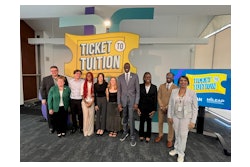Too many students go off to college and don’t learn much because too many institutions of higher learning have low expectations and don’t require students to do significant amounts of reading and writing.
That’s one of the key findings of a new Social Science Research Council report and book to be released at a panel discussion today in Washington, D.C.
The book is titled Academically Adrift: Limited Learning on College Campuses and Improving Undergraduate Learning: Findings and Policy Recommendations from the CLA Longitudinal Study. The report, an abridged version of the book that updates certain findings made while the book was in production, is titled “Improving Undergraduate Learning: Findings and Policy Recommendations from the SSRC-CLA Longitudinal Project.” CLA stands for Collegiate Learning Assessment, an instrument developed to measure various “skills-based” competencies such as critical thinking, analytical reasoning and written communication. Its purpose is to improve undergraduate education through assessment, professional development, best practices and collaboration.
Dewayne Matthews, vice president for policy and strategy at the Indianapolis-based Lumina Foundation for Education, a sponsor of the research, says the findings highlight the need for colleges and universities to examine ways to bring about more effective learning. Currently, he says, many institutions seek to explain away disappointing scores by citing individual characteristics of students.
“You take students and control for every possible variable you could think of and put those same students in different institutions and they learn better in some institutions than in others,” Matthews says of SSRC’s findings. “That is a very significant finding. All of this suggests that colleges and universities can have a big impact on how students learn.”
Among other things, the study found that students who took courses that required both significant reading (more than 40 pages per week) and writing (more than 20 pages per semester) had higher rates of learning.
However, in a typical semester, 32 percent of students did not take any course with such reading requirements, and 50 percent did not take a course with the necessary writing requirements.
Over the entire four-year college experience, 50 percent of students had taken five or fewer courses that required significant writing, and 20 percent had taken five or fewer courses that required significant reading.
Dr. Richard Arum, professor of sociology and education at New York University, the program director of education research at SSRC and co-author of the book and study, says the lack of substantial reading and writing experience helps explain why many students fare no better on various academic performance tasks after college than they did before.
“There’s such low levels of academic rigor that it’s not surprising that large numbers of these kids, after two and four years, can’t do any better on the CLA test than when they started,” Arum says. His research found that 45 percent of students showed no significant improvement on the CLA during the first two years of college, and 36 percent showed no improvement after four years of college.
“They can’t do any better (on the CLA) because they haven’t been asked to read and write and apply themselves,” Arum says.
The report also found that “Black-White gaps” in student performance increase over the four-year college experience. “African-American students improve their CLA performance at lower levels than White students during four years of college,” the report states.
“That’s obviously disturbing,” says Arum. “It’s not too different than the picture in K-12 education. What is different is that in K-12, we’ve asked educators to address that gap and close the racial gaps in learning, and you don’t really have a discourse in higher education that’s similar to that. You don’t have people telling colleges and universities ‘Make sure all the kids are learning.’”
The book and report suggest several policy recommendations, including seeking federal funding for institutional improvement.
“There should be grants available for colleges and universities that are willing to measure learning and design programs that will improve education,” Arum says. “There should be incentives. Right now, most incentives, actually all incentives, are for research.”
But, he adds, that does not mean the federal government should set benchmarks for colleges and universities.
“We don’t believe in federally imposed accountability,” he says. “That often has unintended negative consequences and can be counterproductive.”
Instead, he says, higher education institutions need to take greater responsibility to ensure that the degrees they grant actually signify that learning has taken place.
The SSRC research will be discussed from 2 to 4 p.m. today at the Washington, D.C., headquarters of EducationCounsel. Panelists include Dr. Michelle Asha Cooper, president of the Institute for Higher Education Policy; Dr. Charlie Blaich of Wabash College’s Center of Inquiry in the Liberal Arts; Dr. Alexander McCormick, director of the National Survey of Student Engagement; and Dr. David Paris, executive director of the New Leadership Alliance for Student Learning and Accountability.


















